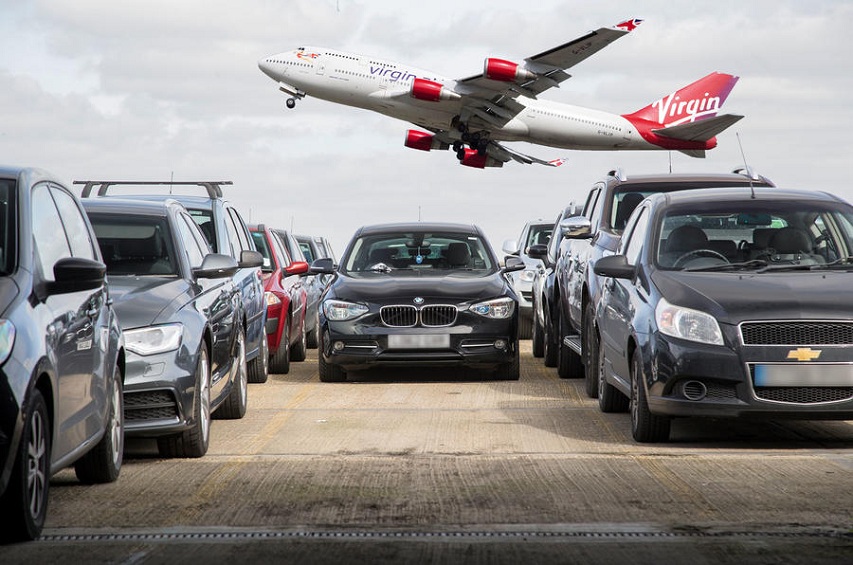Parking at airports: how to best manage it

According to Luigi Carparelli, Large Projects Account Manager at HUB Parking Technology, parking has a major effect on how passengers rate their trip, hence the importance of airports getting it right. Passenger Terminal Today talks to Carparelli about the challenges and opportunities facing airport parking.
How can airports ensure that their parking offer remains competitive?Parking is usually the first and last impression drivers have when visiting a place. Even if they don’t consciously notice it, parking has a major effect on how people rate their visit. Each airport is unique in terms of the product it offers its end customers and the working environment it offers its staff. Parking infrastructures must be welcoming and functional, the flow of passengers must be smooth and the overall experience must be comfortable and well organized.
Digital innovations can add a personalized layer, where we facilitate the connection between all the services offered by the airport and the needs of customers. It can make a tangible difference in the traveler’s experience.
The study of passenger dynamics facilitates the establishment of services that meet the expectations of travelers, and defines a sustainable direction for the future. Airports need reliable tools that can identify potential areas for improvement, measure them and multiply points of contact with passengers at all stages of the journey.
Benchmarking and exchanging successful experiences with comparable airports is a collaborative practice that can benefit everyone in the aviation sector. Industry events and regularly visiting airports are also ideal for exchanging best practices and learning from similar organisations.
What are the main challenges in the airport parking sector?
Parking lots are critical infrastructure and are under pressure to maximize capacity, improve financial performance and mitigate their environmental and community impact. Progress therefore requires addressing capacity utilization, employee parking and facility footprint. How? ‘Or’ What ? One of the measures to adopt is to reduce the percentage of passengers arriving by car. Airports are starting to allow taxis and Uber, Lyft etc. to pick up passengers, not just drop them off, which reduces emissions per passenger.
Injecting digitalization into parking and drop-off areas is also helpful: intelligent guidance systems can reduce traffic jams caused by dozens of vehicles driving around in circles, looking for free spaces. Capacity is intrinsically linked to footprint – for example, most airports in Europe are close to the city center and cannot grow infinitely by building new parking structures, but they can make them larger ecological. They need advanced tools to monitor and report occupancy in real time, manage it flexibly, and enable predictive analytics to optimize existing capacity.
Employee parking plays an important role in the flexible use of spaces: staff teams work around the clock, depending on flight schedules, so the traffic flow of employees is likely to coincide with that of passengers . Equipping parking areas with convenient and easy access helps to attract and retain users of both categories – the challenge is to apply dynamic strategies to move employees to where the free spaces are, minimizing the disturbances.What are the key technologies that will disrupt the airport industry?
A wide range of exciting technologies are being developed, some with real potential to transform airport operations and the passenger experience. I find those that revolve around the management of identification and quick payment particularly promising, as they help to create a smart airport ecosystem that connects with passengers through digital devices – most of the time, the smartphone in their pocket.
Biometric technology has revolutionized access to parking lots, with cameras mounted on entry and exit lanes. Formerly used to dynamically monitor parking spaces and integrated with smart sensors, it also opens up new functionalities, such as “Find my car” or “Premium space rates” based on loyalty programs.
Mobile apps are involved in everything from Uber and Lyft services to fast, cashless payments in Kiss & Fly zones and traditional parking zones. For the latter, pre-booking allows airports to better plan peak capacity, thereby maximizing occupancy of all areas.
Artificial intelligence (AI), 5G and IoT will further drive the adoption of mobile technologies and improve their use. The development of AI is a real game-changer. However, we are not yet at a stage where the consequences of AI are fully predictable. Furthermore, it still requires large data sets and human input through supervised learning. For now, it might be best implemented in non-critical applications, such as predictive maintenance, to help improve system reliability
Where should airports invest in parking technologies?
The sustainability of an airport is a permanent challenge. A wise investment is certainly in smart sensors, advanced management software and digital platforms that enable smart payment technologies. For example, parking lanes can be equipped with long-distance readers, LPR cameras and guidance systems that help reduce congestion. The shift from physical checkouts to pre-booking and smart payment solutions frees users from the need to stop to pay.





